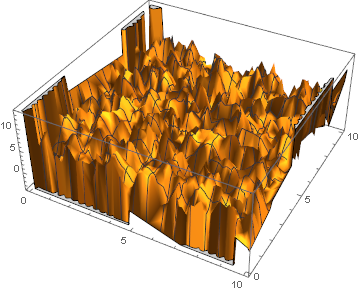Hi Rene,
You want Interpolation rather than ListInterpolation. And notice that the argument is a list of {x1,x2, . . . y}.
d = RandomReal[{0, 10}, {1000, 3}];
f = Interpolation[d];
Interpolation::udeg: Interpolation on unstructured grids is currently only supported for InterpolationOrder->1 or InterpolationOrder->All. Order will be reduced to 1. >>
Plot3D[f[x, y], {x, 0, 10}, {y, 0, 10}]
InterpolatingFunction::dmval: Input value {0.000715,0.000715} lies outside the range of data in the interpolating function. Extrapolation will be used. >>
